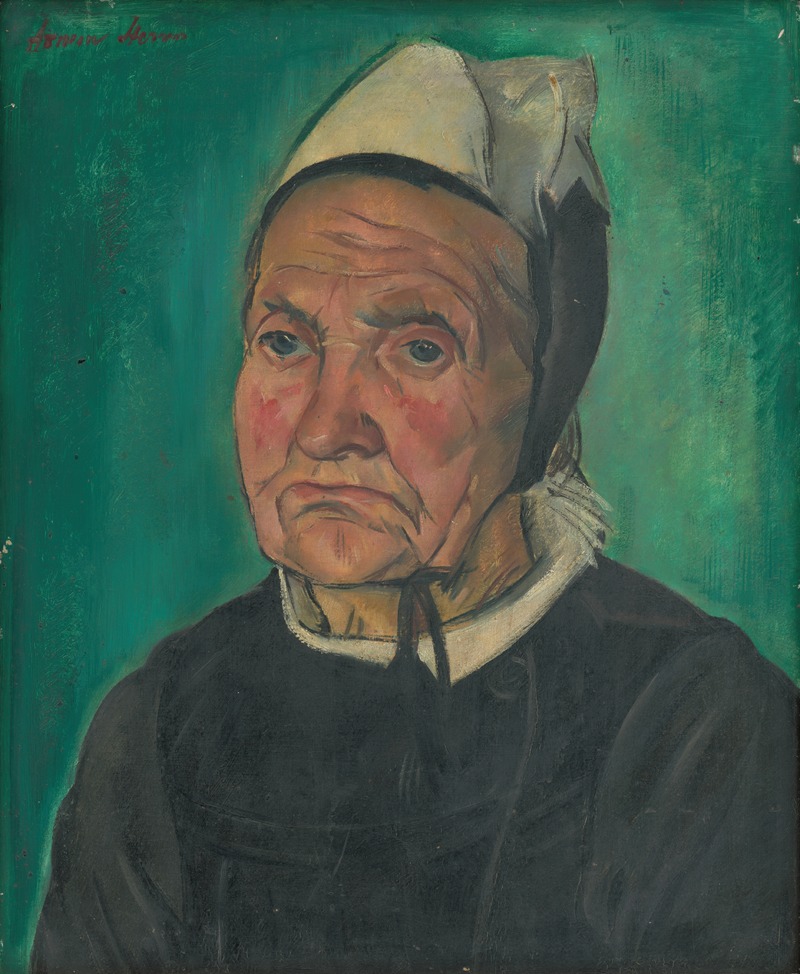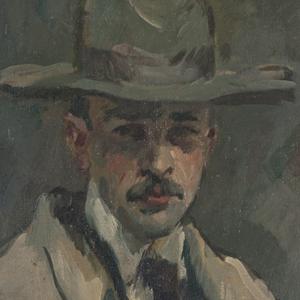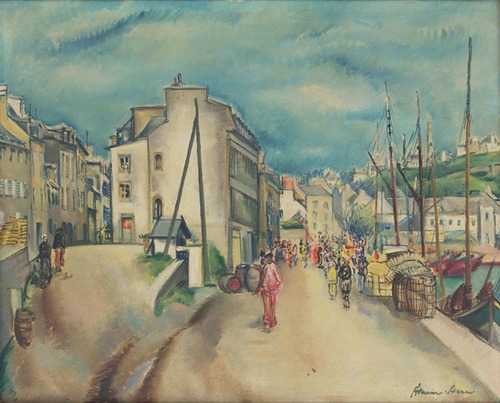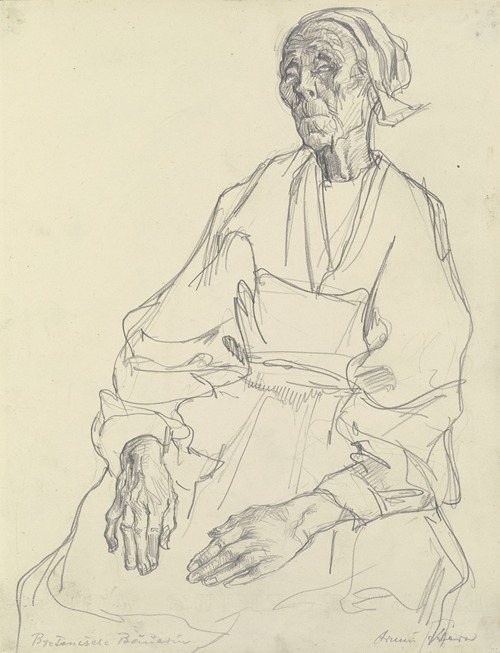

Armin Stern was a Jewish painter.
Armin Stern was born in Galanta on August 17, 1883 under the name Herman Stern. He was the fifth of fourteen children. His parents, the businessman Josef Israel Stern and Rosa, née Wertheimer, were devout Jews who spoke Hungarian, Hebrew and German. The family settled in Pressburg; Armin Stern attended a Talmud school and a business school and practiced drawing.
In 1900 he went to Frankfurt am Main and there from 1901 to 1903 to the Städelschule, where he was a student of the painter Wilhelm Amandus Beer. He was interested in the works of Max Liebermann. In 1904 he enrolled at the Bavarian Academy of Fine Arts, where he studied in the class of Franz von Stuck, who gave him a commendable certificate. The name Armin Stern appeared on this for the first time, with which he would henceforth sign his works.
In 1908 he traveled to Paris. There he came into contact with Zionist circles. During another stay from 1910 to 1912, he attended courses at the École des Beaux Arts, apparently as a freelance student. He benefited from the influence of the Impressionists, particularly Edgar Degas and Paul Cézanne.
In 1912 he returned to Frankfurt. Several of his paintings were shown in the Frankfurter Kunstverein's spring exhibition; the reviews praised his pictures Samaritans and Farmers Eating Potatoes. He spent the summer in rural areas in Hesse, especially in Treysa, and painted landscapes.
In 1917 he returned to Bratislava; There he was drafted into the Austro-Hungarian military until 1918 without having to serve as a weapon. In 1918 his first exhibition took place in Bratislava, with the sale of his works in aid of the victims of the First World War. After his military service he returned to Frankfurt; There he continued his artistic activity, took part in exhibitions and worked, together with other artists, in printmaking and monotypes. In 1924 an exhibition took place at the Kunstverein Frankfurt that was exclusively dedicated to his works from 1913 to 1923.
In 1922 he stayed in the artists' colony of Concarneau in Brittany; he returned there several times between 1925 and 1932. In Concarneau, Locronan, Douarnenez and Audierne he painted seascapes, pictures of villages, portraits, fishing boats. He also painted in Paris and Holland - he traveled there in 1924 following in the footsteps of Max Liebermann.
In 1925 he married Dorothea Antonia Menzler, called Toni (1894–1987), who came from Treysa in Hesse. Their daughter Anna Ester (1926–2008) was born a year later.
In 1927 he portrayed the actor Arthur Bauer in Frankfurt ; The picture is now owned by the Frankfurt Municipal Historical Museum.
In 1928 he traveled to Ascona and painted several portraits of personalities who stayed on Monte Verità, including Emil Ludwig. His main residence remained Frankfurt, where he took part in various exhibitions. He also exhibited in Kassel and Bratislava. In 1930 an exhibition of his pictures took place in the Palffy Palace in Pressburg. In 1931 he portrayed Schmarja Levin and Sholem Asch .
In 1933, faced with the rise of Nazism, Stern sought to obtain recognition of Czechoslovakian citizenship for his family. He himself was born in the Austro-Hungarian Empire and his wife was German. A short time later, the Frankfurt Art Association refused to exhibit his pictures because he was Jewish. The family left Frankfurt and settled in Bratislava. In 1933–1934, Stern made a long journey to the Middle East, particularly to Palestine , where he painted numerous pictures (Jerusalem, Safed, Hebron, Jaffa), but also sought a place where he could find refuge with his family.
In 1935 he wrote an obituary for the Jüdische Zeitung in Pressburg on the death of Max Liebermann. From November 1937 to January 1938, several of his works were shown in the exhibition “The Eternal Jew ” at the German Museum in Munich.
During his years in Bratislava, Stern took part in several exhibitions. The political mood worsened; After the Sudetenland was annexed to Reich Germany in September 1938, he temporarily withdrew to northeast Slovakia. He tried unsuccessfully to obtain an entry visa for his family to Palestine, which was under the British mandate.
Emanuel (“Manny”) Celler , a member of the United States House of Representatives who came to the aid of numerous Jewish refugees, managed to obtain entry visas for Armin Stern, his wife and his daughter. They were able to travel to the USA and meet Stern's brother Moritz, who lived in New York . The journey from Cherbourg to New York on the ship “Franconia” began on December 24, 1938. The family arrived in the USA in early January. During the crossing, Armin Stern drew a portrait of David Ben Gurion, who was also on the ship.
The last years of his life in the United States, in New York City, were marked by fear for his family who had stayed behind in Europe. Most of his brothers and sisters were deported to Auschwitz and killed there. Stern, along with other Jewish painters, took part in several exhibitions in New York. He died of heart failure while staying in the port city of Gloucester, Massachusetts, on July 9, 1944. He was buried in the Jewish Cemetery in New Jersey.



